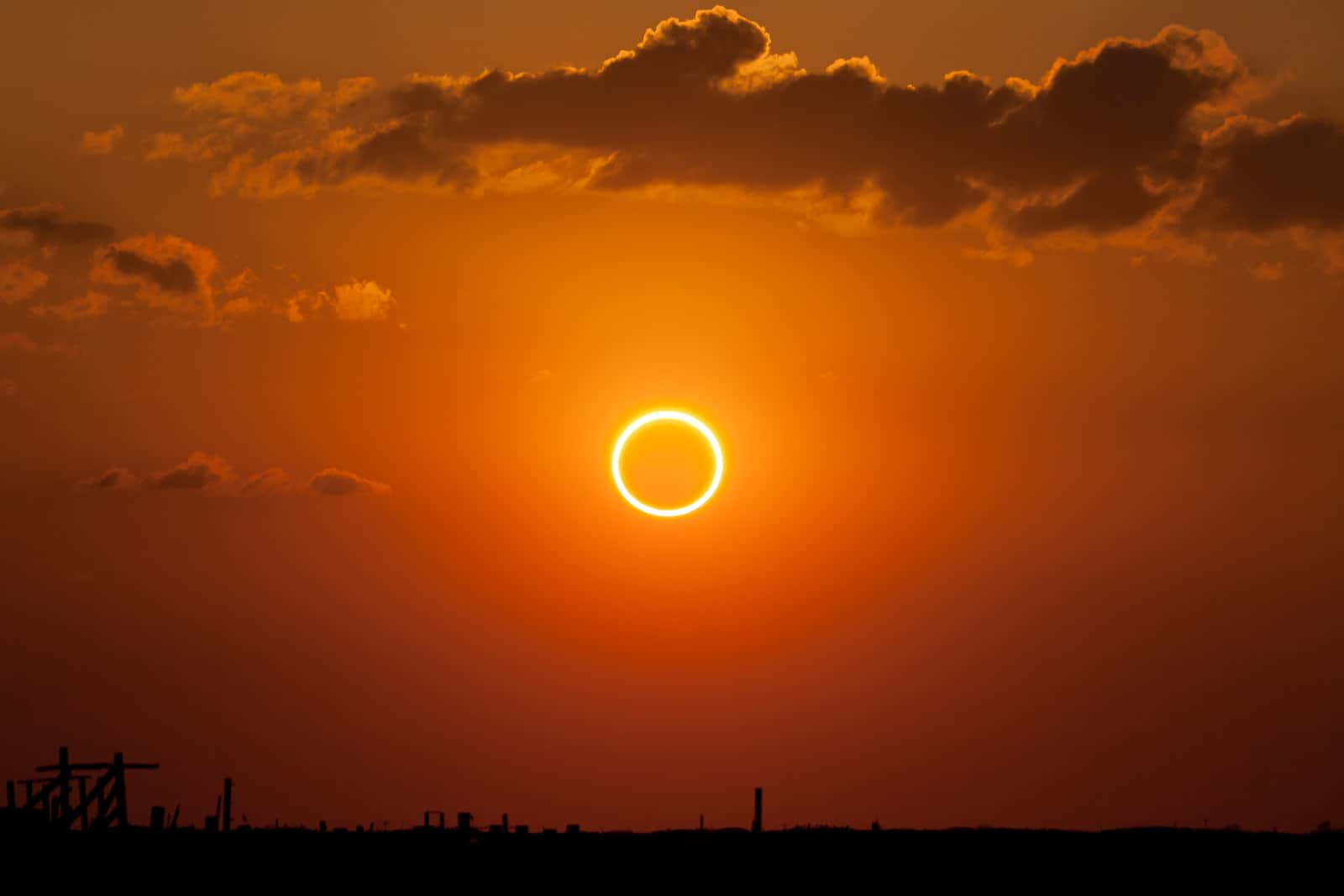This captivating “ring of fire” effect will be visible to those within the 125-mile-wide path of annularity, spanning from Oregon to Texas and reaching across 10 countries.

On October 14, a celestial spectacle will unfold as the moon partially obstructs the sun, creating an annular solar eclipse, and transforming our star into a cosmic “ring of fire”
Those near the path’s edge will witness a partial solar eclipse, resembling a “bite” taken from the sun. For a comprehensive guide to the 2023 annular eclipse, including where and how to watch online, NASA offers a detailed interactive map. While many will flock to the path of annularity or tune in online, some will choose to avoid the annular solar eclipse altogether.
In Navajo culture, an eclipse signifies a fresh start, with the word for the annular solar eclipse, jóhonaa’éí daaztsą́, translating to “the death of the sun.” During this event, many Navajo people observe fasting and prayer, considering the sun’s return as a moment of rebirth and resolution. To honor Navajo cultural beliefs, all Navajo Tribal Parks will close from 8 a.m. to 1 p.m. MDT on October 14, 2023, including notable sites like Monument Valley Navajo Tribal Park and parts of Tséyi’ Diné Heritage Area.
Scientists are eagerly anticipating the October 14 annular solar eclipse as a precursor to the total solar eclipse on April 8, 2024, providing a unique window to study the sun’s outer atmosphere, the corona, during near-total blockage by the moon
These upcoming solar eclipses coincide with the active phase of solar cycle 25, leading to heightened scientific interest. Utilize solar filters for safe viewing, whether experiencing a partial or annular solar eclipse, and ensure solar eclipse glasses and filters are securely in place for observers using cameras, telescopes, or binoculars.
The celestial show continues after the annular solar eclipse on October 14! Two weeks later, on October 28, a partial lunar eclipse will grace the skies, visible across a significant portion of the Eastern hemisphere. This event occurs when Earth casts a shadow on the lunar surface, with only a portion of the moon entering into shadow.
READ ALSO: Arianespace’s Vega Rocket Successfully Launches 12 Satellites On First Mission Of The Year




